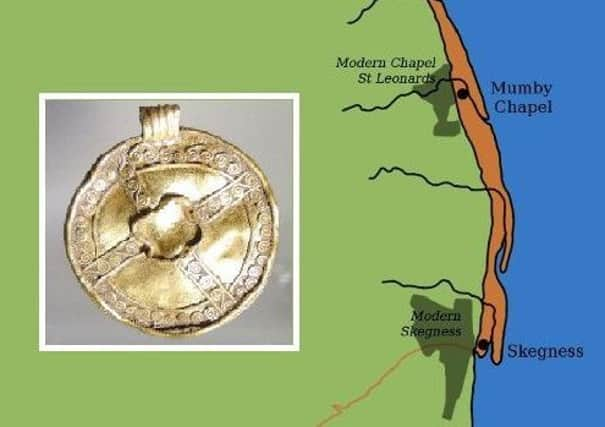Old Skegness lost to the sea could be hiding ancient treasures


It has been known for some time that ‘old Skegness’ was swallowed by the sea in the 1500s following storms and floods - it now being located about half a-mile out to sea. However, a few tantalising clues also point to a lost Roman town with a tower or fort.
Recent research by historian Dr Caitlin Green details a number of Lincolnshire villages submerged over the centuries. Her map illustrates how the coastline looked in medieval times and reveals a number of mysterious islands lost to the sea in the 1200s.
Advertisement
Advertisement
Two of these are situated off the coast between Skegness and Mablethorpe, two in the Wash between Wainfleet and Boston - and several more further north off the coast of Saltfleethaven. Believed to have been created following floods around 6000BC, the remaining islands were the unsubmerged high points of the land.


Speaking to The Standard, Dr Green said: “There’s a pretty good chance of something interesting being out there, though quite where it now lies is open to debate. We know that ‘Old Skegness’ certainly lies out beyond the low-tide there, given that sailors were still reporting encountering the old church steeple out there in the 17th century, and the description of the town combined with local place and field-name evidence is most suggestive with regard to its potential Roman roots.”
Beach replenishment schemes in recent years have reduced the chances of seeing lost settlements - although dredging at sea, where sand is sucked up off the seabed and pumped back onto the beach, could well unearth some interesting clues.
Antony Lee, archaeology curator at The Collection in Lincoln is also confident a Roman town could be located off the coast of Skegness.
Advertisement
Advertisement
Mr Lee, who has written a book entitled ‘Roman Treasures of Lincolnshire’, cites 16th century antiquarian John Leland, who toured the county making notes. One such entry in his log recounted local lore of a ‘haven and walled town with a castle’ off the coast of Skegness.


Mr Lee writes: “In the absence of documentary evidence of a medieval castle cited at that point on the coast, there is a long-held belief that the remains could be Roman in date – perhaps representing a walled town or, more likely in my opinion, a late Roman coastal defensive fortification.” He added: “The study of finds of pottery and metalwork washed ashore start to provide us with more clues to this fascinating subject and what may lay underneath the waves off the coast.”
Historical artefacts - from Roman and Anglo-Saxon treasure to more modern relics - have been discovered in the Skegness area in recent years.
These have included a gold early Anglo-Saxon pendant, Roman coins, and Medieval coins, silver objects and beads.
Advertisement
Advertisement
Experts believe the locations of these finds could help to put an ‘X’ on the spot - pinpointing the lost Roman town and other settlements.


New Lidar (light detection and ranging) scans of the coastline and marshes as part of the Lincolnshire Coastal Grazing Marshes Project could also further help in the search. The laser technology, typically collected via aircraft, takes a three-dimensional scan of the Earth’s surface - revealing both modern features and more ancient ones hidden at ground view by water or vegetation.
Dr Adam Daubney, Lincolnshire County Council’s finds liaison officer said: “Over the years, the sea has eroded parts of the Lincolnshire coast, especially around Skegness, which has resulted in the loss of several settlements. There is the possibility that artefacts could wash up on the beach from any of these settlements, and there is also the possibility for artefacts to be dumped on the beach during beach replenishment schemes. All of these artefacts have the potential to inform us about Lincolnshire’s submerged settlements.”
Anthony Lee concluded: “Might there be a preserved Roman town beneath the sands? No. But might the study of finds of pottery and metalwork washed ashore start to provide us with more clues to this fascinating subject and what may lay underneath the waves off the coast? Absolutely.”
Advertisement
Advertisement
So while there may indeed be a buried Roman town in Skegness waiting to be unearthed - you will need some high-tech marine-archaeology equipment and a boat to find it.


If you uncover anything of historical interest along the Lincolnshire coast contact Dr Adam Daubney via [email protected] and let us know by emailing [email protected].
For more on Dr Caitlin Green’s fascinating work visit her website.